Label Feature #11: Emotional Response
By Simon Daley
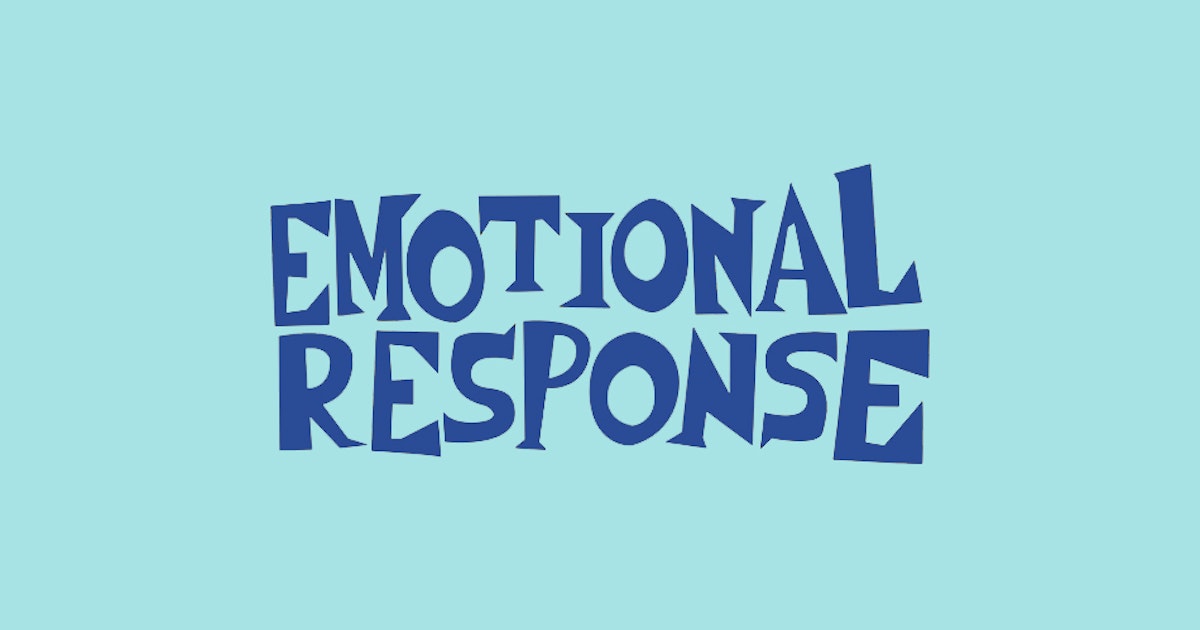
Cult favorite record label Emotional Response was founded in 2013 as a way for musician Stewart Anderson to discreetly release his own music. Other established artists as well as Anderson’s global legion of fans had other ideas, now eight years later the label continues to release sought-after records by an enviable roster of artists and bands.
Successful business people are often reported to have a “midas touch”. It’s a phrase more overused than a tabloid journalist referring to a Silicon Valley tech CEO as a “genius”. But how else would you describe someone who over the course of a 25+ year career has been at the helm of not one, but two successful independent record labels? Stewart Anderson for sure has the midas touch! After a three-year hiatus from the industry, he returned in 2013 with Emotional Response, a new label designed to release his own projects that would later evolve to be home to a roster of international artists and bands. We caught up with Stewart to learn his motivations for returning to the industry, how the industry has changed over two decades and what’s in the pipeline for his prolific label.
After over 15 years running your former record label 555 Recordings, you decided to launch a new label in 2013. What was the inspiration behind starting Emotional Response?
I was managing a cattle ranch and my life was already quite chaotic, but in 2009 my daughter was diagnosed as Autistic. I attempted to simplify my life by focusing on what best route to take and I stopped doing music for a while. A good friend, who has a teenage Autistic son himself, eventually wrote to me and said I needed to start making music again, as I needed to “give myself something” to remain sane. So I recorded a bunch of spur of the moment new music with friends, purely to throw myself back into it. The label, initially, was purely designed as a vehicle to reconnect with people I had lost touch with over the years. It was meant to be kind of a vanity label with my own music, that I didn’t have any commercial aspirations about. The term “Emotional Response (ER)” is used in the Autism community, referring to uncontrolled reactions, both good and bad. It seemed quite fitting at that point in my life.
The label’s first releases were a series of 7” records with a very distinctive design. Can you tell us about the concept and the designer that you collaborated with?
The designer is my friend Simon Williams who was in the bands Sarandon, Future Sperm Brasil, and Crayola Summer. I had recorded a single with him and David Nichols (The Cannanes) as The Safe Distance. I knew he had a design company side hustle, so asked him to help design a logo based on the Immediate Records logo from the 60s. I wanted something very Mod looking and also a way to collate the first series of singles, so that they looked like a deliberate set.
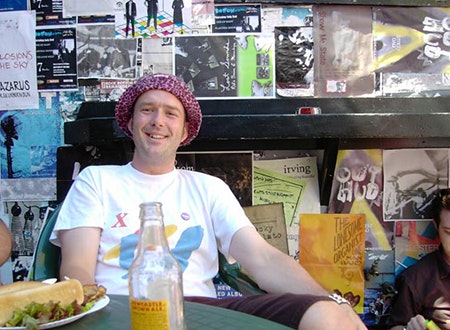
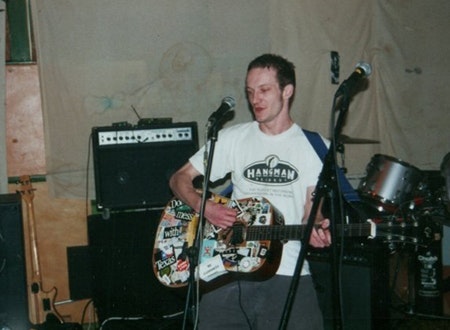
You’ve been releasing vinyl records through your various record labels since 1995. In your experience, how has the vinyl record industry changed in that time period?
Very much up and down and now on the up again. In the late 90s maybe I just had more energy, but running 555 Recordings seemed a lot easier. I could release records somewhat under the radar, quickly and with little fanfare and still break even. I was living in Leeds, UK and using GZ Media in the Czech Republic. Turnaround times back then were very quick, I think 4 to 6 weeks from sending a master CD-R off to press, with photocopied bits of paper the pressing plant would magically turn into label art and sleeves. It was VERY DIY back in the 90s! Some of the releases back then sold 4 times as many as I currently do now as Emotional Response. It tapered off when iTunes became a dominating factor in the world of indie-dom. The mid 2000s were very rough with lots of record stores succumbing to the digital revolution. I got down to pressing at one point, vinyl LPs in editions of just 100 as the whole indie network of physical distribution collapsed. It’s definitely getting better now, I have hung in there and now feel like I am creating an audience, not just catering for one. I wish I had more time to dedicate to the day to day running of it. Bandcamp has been a driving factor in the survival of many small labels like my own, where fans can buy directly from the label and even just selling 10 copies of a record a month helps keep things ticking along without the despair of feeling like you are failing the bands who you release. Physical Distribution to brick and mortar store for small labels is still very difficult. There are diminishing options for smaller indies. I’m now the Assistant Manager of the Puscifer Record Store in Jerome Arizona, in charge of curating the store’s vinyl department, so I have the pleasure of seeing how it works from both sides of the fence now! I now have the pleasure of two headaches instead of one, when it comes to dealing with distribution.
In recent years, many labels releasing vinyl records have fuelled an “arms race” to release the most complex multi-color splatters and effects. Emotional Response has taken a different route, mostly choosing single color or Black for its vinyl releases. Was this a conscious decision you made from the start?
Not really a conscious decision. I love picture discs and color vinyl and gimmicky things of all nature. I started buying records in the 1980s when it was common to have multiple versions of the same release in an effort to get into the charts. I remember buying 7inch, 10inch, 12inch versions of the same release by some of my favourite bands such as The Jesus and Mary Chain. But I default to the bands for vinyl colors and artwork. Some bands straight up want only Black vinyl. Some are happy to toy with different variants. I get young hopeful designers approaching me most weeks asking to design record sleeves. But I want the bands themselves to have full artist control. I want to make the record they want to make. I see Emotional Response as a vehicle. If I like a band enough to want to put a record out, then I trust them to make a fantastic record. It’s my belief anyone can knock together a record sleeve on a laptop at this point. Much as any band can record themselves in their spare room. The technology is there. I just send the bands a logo, catalogue number, and a barcode and tell them to get on with it haha!
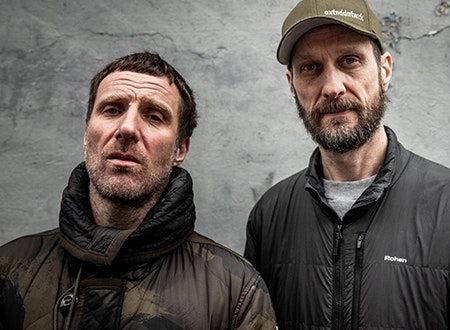
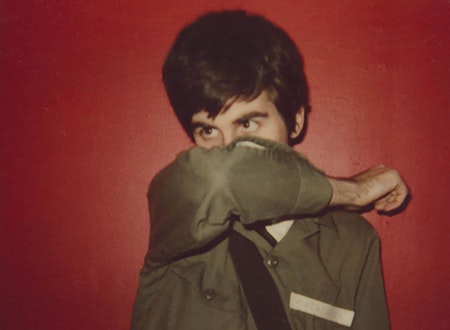
After only 8 years, Emotional Response has released well over 100 projects from a wide array of artists. Looking back, which three releases were milestones for the label?
SLEAFORD MODS – The record that flipped my label’s narrative. I was aware of the Mods and had their early singles, so I was already a fan when they approached me and asked if I wanted to release a single. At the time, I had only been sticking out my own music and Emotional Response was still very much small time. So I assumed they were aware of my previous label 555 Recordings, or that it was my reputation as an indie-punk lifer and general indie-nice guy from the band Boyracer. Regardless, I stuck out the 7inch and it sold quite well (2,500 copies). It was at that point I went all in and decided to release music by other bands, rather than just my own music.
THE JUST MEASURERS / THE FEAR MERCHANTS / UNHAPPY FLY – It’s been an absolute thrill working with Jim Welton (aka Amos / Xentos Fray Bentos / Harmon E. Phraser etc). His emails are a joy to read and his music genuinely affects me whenever I listen. For those aware of his music, he is a legit UK DIY art-punk heavy hitter and has recorded under a plethora of aliases. From the late 70s onwards he was responsible for such acts as The Homosexuals, The Work, Amos and Sara, Gus Coma, Milk From Cheltenham, L. Voag and a bazillion short-lived others. At the time I tracked him down (via another UK DIY art punk legend, Robert Storey) he was very much a shadowy figure, with very little online presence who did not do interviews. The Just Measurers LP was originally released in 1983, on Weltons own Its War Boys label, in an edition of just 300 copies and was fetching $450 on eBay around that time. I myself coughed up $125 for a copy when I saw it in the wild about 20 years ago. To my surprise Jim was receptive to me re-releasing it and at the same time, to my delight, shared some new music with me. UNHAPPY FLY, Welton’s project with Richard Dudanski (formerly of Public Image Ltd, the 101s, Raincoats etc) makes me so happy just listening to it. Fantastic pop songs, with some unexpected weirdness thrown in.
MICK TROUBLE – Enigmatic and charming, brilliantly constructed songs. Mick Trouble started as a rather convincing faux Television Personalities side project, complete with elaborate back story. Jowe Head (Swell Maps / TVPs bassist) was even credited on the sleeve and wrote to me asking what the heck this record was that he didn’t play on! This fortunately gave me the opportunity to release Jowe Heads’ 11t Hour Adventists LP. It’s now common knowledge of course that Mick Trouble is in fact the supremely talented Jed Smith (also of The Jeanines and My Teenage Stride). He’s a tricky bugger to work with, but compensates with his big bold dreams, amazing songwriting palette and recording skills that others can only gawk at. Which is why everyone loves his records!
What can we expect from Emotional Response in 2021 and beyond?
LOTS! 2021 is going to be great. New records in various stages of completion from Tape Waves, Boyracer, Monnone Alone, Seablite, Neutrals, Die Schiefe Bahn, and Mick Trouble, more Jim Welton projects, and a new Robert Storey project.
For more information about the label and releases visit emotional-response-recs.bandcamp.com